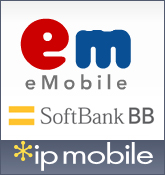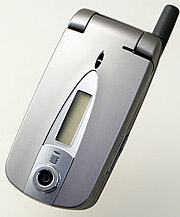ArrayComm Announces Network MIMO for WiMAX
ArrayComm today announced its Network MIMO software that implements all antenna processing aspects of the WiMAX profiles approved by the WiMAX Forum Mobile Task Group (MTG) for IEEE 802.16e. The solution includes unique support of MIMO, AAS, and combined MIMO/AAS modes on both client devices and base stations, providing operators with the best possible user data rates, cell range, and network capacity for mobile WiMAX. At the MTG meeting in Beijing last week, the WiMAX operator and manufacturer community finalized recommendations for the profiles for interoperable implementations of IEEE 802.16e. The profiles now proceed toward ratification by the WiMAX Forum Technical Working Group and Board.


 Back in 1999, when I was editing Computing Japan magazine, we ran an article entitled “
Back in 1999, when I was editing Computing Japan magazine, we ran an article entitled “ NEC Corporation today announced that it has developed its first i-mode 3G terminal “N600i” for an operator outside Japan and has commenced delivery of the terminal for COSMOTE, the largest mobile operator in Greece. COSMOTE, celebrating i-mode’s first year in the Greek market, is the first i-mode operator in the world, after NTT DoCoMo in Japan, to introduce the 3rd Generation i-mode, next generation innovative mobile Internet services. The new terminal is the first 3G (W-CDMA) and GSM/GPRS-capable i-mode terminal outside Japan.
NEC Corporation today announced that it has developed its first i-mode 3G terminal “N600i” for an operator outside Japan and has commenced delivery of the terminal for COSMOTE, the largest mobile operator in Greece. COSMOTE, celebrating i-mode’s first year in the Greek market, is the first i-mode operator in the world, after NTT DoCoMo in Japan, to introduce the 3rd Generation i-mode, next generation innovative mobile Internet services. The new terminal is the first 3G (W-CDMA) and GSM/GPRS-capable i-mode terminal outside Japan. DoCoMo’s i-mode goes for the globe! Japan’s leading cellco and its eight alliance partners in Europe, Taiwan and Australia agreed on their first
DoCoMo’s i-mode goes for the globe! Japan’s leading cellco and its eight alliance partners in Europe, Taiwan and Australia agreed on their first